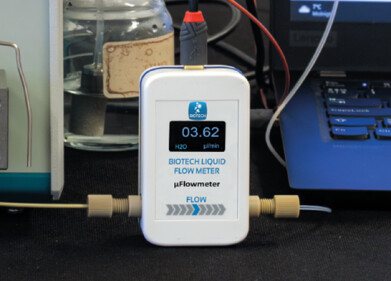HPLC, UHPLC
Improving Diabetes Diagnosis in Elderly Patients - Chromatography Explores
Mar 31 2019
Diabetes is a disease that has seen enormous increases in the number of people diagnosed in the last few decades. Changing diets alongside a more sedentary lifestyle are just some of the causes as an estimated 422 million people had diabetes in 2014, up from 108 million in 1980. Diabetes was also thought to be one of the major causes of early death in 2016 according to the World Health Organization.
Diabetes can be avoided by eating healthy, taking regular physical exercise and not smoking. It can lead to major health problems including blindness, kidney failure, heart attacks and lower limb amputation - and so the aim is to make sure that it can be diagnosed accurately and controlled if a patient has diabetes. A recent paper published in the journal Endocrine Disorders has investigated ways of improving diabetes diagnosis for elderly patients - and chromatography played its part.
Could HbA1c hold the answer
The paper - Preventing misdiagnosis of diabetes in the elderly: age-dependent HbA1c reference intervals derived from two population-based study cohorts - looked at the role played by HbA1c in the diagnosis of diabetes, particularly in elderly patients. But what is HbA1c and why is it important for a diabetes diagnosis?
HbA1c is the shorthand for glycated haemoglobin and can play a major role in diabetes diagnosis and control. HbA1c is made when the glucose in your body attaches to your red blood cells. When your body cannot use glucose, it can attach to red blood cells and build up in your blood. As your red blood cells are active for 2-3 months, the HbA1c test is carried out every few months and measures how much sugar is in your blood - the average amount of glucose in your blood for the past 2-3 months. Too much sugar in your blood can damage blood vessels and lead to other complications.
Being elderly needs its own research values
HbA1c reference values were obtained in 1986 by analysing a small population of non-diabetic individuals. But these individuals were all in the age range 13-39. But HbA1c is age dependent as our red blood cells live for different lengths of time as we age. The study referenced above: ‘aimed to evaluate HbA1c levels in relation to age in two independent population-based cohorts and to derive age-specific reference intervals.’
The study team analysed the HbA1c levels in over 8000 participants using high performance liquid chromatography. The following article looks at how methods are developed in chromatography, Integration of MS and UV Data for Peak Tracking in HPLC Method Development. The team: ‘confirmed the previously observed increase of HbA1c with increasing age in non-diabetic individuals. As a consequence, age-dependent reference values for HbA1c were derived from two large and well-defined reference populations.’ Using the new reference values should enable improved patient care and reduced misdiagnosis of diabetes in elderly patients.
Digital Edition
Chromatography Today - Buyers' Guide 2022
October 2023
In This Edition Modern & Practical Applications - Accelerating ADC Development with Mass Spectrometry - Implementing High-Resolution Ion Mobility into Peptide Mapping Workflows Chromatogr...
View all digital editions
Events
ACS National Meeting - Fall 2024
Aug 18 2024 Denver, CO, USA
Sep 04 2024 Chiba, Tokyo, Japan
Sep 04 2024 University of Warwick, Coventry, UK
Sep 10 2024 Rockville, MD, USA
Plastics Recycling World Expo Europe
Sep 11 2024 Brussels, Belgium














